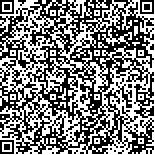下载中心
优秀审稿专家
优秀论文
相关链接
摘要

得益于中国自主遥感卫星、无人机遥感和物联网等技术的发展,中国农业遥感研究与应用在过去20年取得了显著进步,中国农业遥感信息获取呈现出天地网一体化的趋势;农业定量遥感在关键参数遥感反演技术方法与应用方面取得进展;作物面积、长势、产量、灾害遥感监测的理论与技术方法取得突破,农业遥感技术应用领域不断拓展。本文从农业遥感信息获取、农业定量遥感、农业灾害遥感、作物遥感识别与制图、作物长势遥感监测与产量预测、农业土地资源遥感等方面对中国农业遥感科研与应用进行了总结综述。
This paper represents a literature review on the progress in the field of research and applications of agricultural remote sensing in the past 20 years in China. In remote sensing information retrieval, the space-ground-network integrated technical system has emerged because of the rapid development of Earth observation satellites, the booming of unmanned aerial vehicles, as well as the extensive and intensive application of wireless sensor networks and the Internet of Things in China. In quantitative remote sensing, various agricultural parameters, including LAI, soil moisture, and crop nutrients have been inverted from remote sensing data via statistical and/or mechanical models. In crop acreage estimation and crop mapping by remote sensing, considerable progress in algorithms and operational system development has been made in the past 20 years in China. In crop growth monitoring and yield estimation/prediction, quantitative remote sensing data products as well as various remote sensing indexes have been used with in-situ data. Various empirical models have also been investigated. Remote sensing data assimilation with crop growth models is a prevailing issue in this research field. For agricultural disaster monitoring and assessment with remote sensing, drought, flood, pests, plant disease, and so on have been studied with different types of remote sensing data and quantitative data products with various models. Some of these research outcomes and systems have been operational. In remote sensing for agricultural land resources, the research foci is shifting from land resources quantity research to spatial patterns and their dynamics, as well as to specific elements of agricultural lands, e.g., facility agriculture land and plastic-mulching cropland. The classification methods are more diverse, and novel methods, including object-oriented methods, machine learning methods, knowledge-based algorithms, and so on, are investigated. In the past 20 years, significant progress has been made in the research and application of agricultural remote sensing in China. In the future, an increasing number of Earth observation satellites will be in orbit with the application of the China High Resolution Earth Observation System and National Spatial Infrastructure. Sensor technology, Internet plus, big data, and artificial intelligence, among other technologies, are expected to develop rapidly. In this new era, the agriculture development pattern will change with the upgrade of the national economy and social development in China. Many new demands and opportunities will occur in agricultural remote sensing research and application. First, the space-ground-network integrated technical system for agricultural information retrieval will be applied more extensively to meet diverse demands in various agricultural sectors. Second, new techniques, including artificial intelligence, big data, and so on, will play important roles in solving critical problems in agricultural remote sensing research and applications. Third, remote sensing is expected to be applied more extensively in new sub-disciplines of agronomy, which will not only improve agricultural research but also enrich the theory and techniques in remote sensing.

